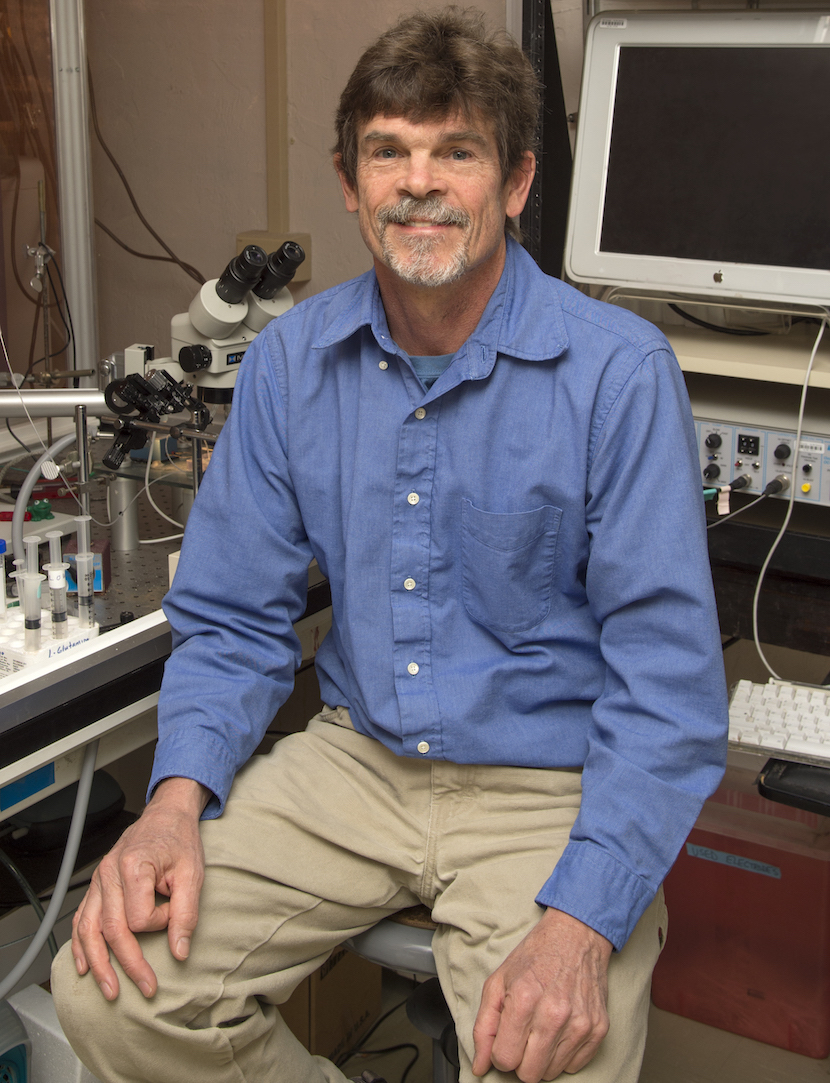National Institutes of Health grant helps Idaho State University Groome Neuroscience Lab study disease, train students
August 10, 2016

POCATELLO – Idaho State University researcher James Groome is studying mutated human proteins to help understand and fight a variety of diseases such as epilepsy, while at the same time training ISU students to become the type of scientists to carry-on this work.
Groome, an associate professor of biological sciences who runs the Groome Neuroscience Laboratory in the ISU Gale Life Sciences Building, has received a $330,642 grant from the National Institutes of Health’s National Institute of Neurological Disorders and Stroke. This allows Groome, a Ph.D. student, two masters students and four undergraduate students to begin a new area of investigation following the work from a previous NIH grant Groome received in 2009.
“We are studying the basic biological function of ion-channel proteins in order to better understand both how they work in normal conditions and how they work improperly or are dysfunctional in disease states,” Groome said.
There are dozens of families of diseases that are caused when people inherit mutations of these proteins. A good example of these well-studied diseases includes epilepsy. There are a lot of different kinds of epilepsy, called epilepsy syndromes and many of them are caused by ion channel mutations. Most of the cardiac arrhythmia syndromes are also caused by ion channel mutations. The ISU researchers are studying similar mutations that cause neuromuscular syndromes such as myotonia or paralysis.
“The NIH is interested in supporting work on basic biological processes that are relevant to disease, so we follow that doctrine,” Groome said. “We are not doctors. We don’t treat patients. We are trying to understand the biology of what goes wrong in these diseases so that better drugs can be designed to treat these diseases because we know more about what these diseases are doing and how they are interacting with proteins.”
Groome emphasized his lab is not engaged in strictly theoretical work.
“We’re not separating basic research from what is applied,” he said. “It is part of the continuum. Our biomedical research is of direct relevance to health and it can have clinical applications. We are collaborating with people who do publish in clinical journals.”
In addition to the importance of the scientific discovery, teaching is an important facet of this research.
“We are engaged in work that both involves students as real researchers and work that is directly relevant to bio-medial research,” Groome said. “Mentoring students is a big part of this grant and to have involvement from students from different levels. I’m not just in a lab working with post-docs –-- I have involvement in this grant with students from different levels, undergraduates and graduate students who will work together on the project.”
The researchers inject genetic material into frog eggs and then use a process called electrophysiology to study them.
“We look at human proteins in a frog egg,” Groome said. “This is not unusual. There are hundreds of laboratories across the world that do this. We are looking at the interactions of the parts of the protein that we feel are crucial for their function and that would be dysfunctional in a disease.”
Ryann Camp, from Idaho Falls who will be a biological sciences senior this fall, worked in the Groome Laboratory this summer as part of the NIH IDeA Network Biomedical Research Excellence (INBRE) program and she will work in the lab this fall.
“I like the molecular part of it, the whole mutating of the protein, that’s what I’m interested in,” Camp said. “I had never done any of the electrophysiology, but now that is really interesting, too, because I’ve been exposed to new things. It is cool to work with a protein that the crystal structure hasn’t been known.”
The Groome Laboratory is just a part of a network of more than a dozen ISU neuroscience researchers from a variety of fields including biological sciences, psychology and pharmacy.
“We have a strong neuroscience research program at ISU and we have very active outreach activities,” Groome said. “We have a local chapter of the Association of Neuroscience, the Snake River chapter. We engage in a variety of outreach activities including giving talks and doing tours. Most of our outreach efforts are directed towards students in grade school through high school.”
The title of Groome’s NIH grant is “Determinants of Sodium Channel Function: Ion Pair Interactions Across Domains.”
Please note: Research reported in this publication was supported by the National Institute of Neurological Disorders and Stroke of the National Institutes of Health under Award Number R15NS093579. The content is solely the responsibility of the authors and does not necessarily represent the official views of the National Institutes of Health.
Categories:
